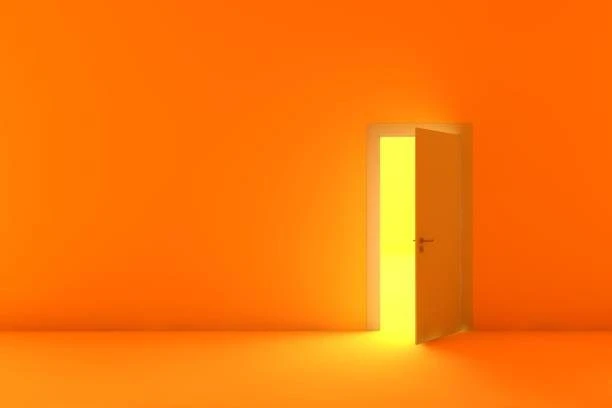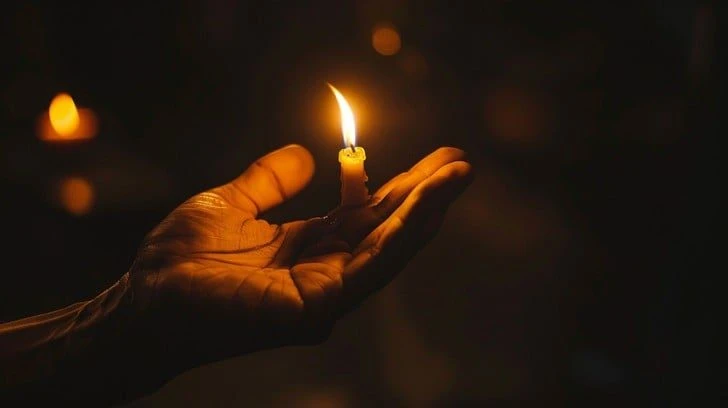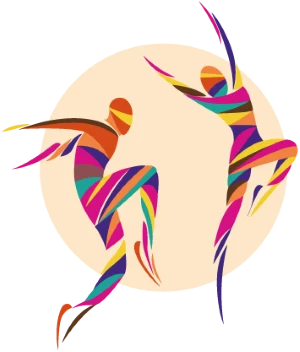Or The Dynamics of Stillness

An exploration of the invisible thresholds between action and non-action, inspired by the philosophy of attention.
Leaving the door ajar is refusing to close a line of inquiry before it has whispered all its answers. For stillness is not the absence of movement, but its most subtle dynamic.
Note: I use the term “line of inquiry” rather than “question” to evoke its processual nature, akin to the inner movement described by awareness.
Awareness: The Gateway to Possibility
Change does not begin with action, but with awareness. Awareness—this active process of waking up to oneself, to one’s patterns, to one’s limits—is the first step in any transformation.
This process is often summed up by the now-popular phrase: “Awareness is the first step toward change.” It has become a cornerstone of psychological and personal development approaches. Yet it often implicitly suggests that change is an end in itself—which narrows our choices.
As Moshe Feldenkrais, pioneer of somatic education, put it: “We can only change what we perceive.”
Before altering a movement, a habit, or a belief, we must first become aware of it—like switching on a light in a dark room. This phase is not passive: it demands fine attention, judgment-free curiosity, and often the courage to see what was previously invisible. That is why awareness is not a state, but a process—an inner movement.

Yet awareness does not stop there. Once the light is on, a question arises: What do we do with this clarity?
Discernment
Once consciousness is awakened, the question becomes: “Is change necessary?” or “Must I change?”
This process of discernment is not cold analysis, but an inner dialogue where our emotions and value systems become compasses.
Let’s take a simple example: in a heated discussion, choosing not to retort with a cutting remark—even if it seems justified—can be an act of respect. Respect for the other (a value), but also for our own integrity (a response to fear).
This conscious restraint is not weakness, but an affirmation of what matters more to us than a fleeting victory: preserving a respectful relationship, or simply inner peace.
Thus, deciding not to change—choosing stillness—refusing to yield to an impulse, a social expectation, or an old or new habit—can be an act of coherence. It is not resignation, but an active decision to remain true to what, at that moment, defines us.
Stillness as Transformative Act
This step of discernment is often overlooked, yet it is essential. In a society that glorifies action and productivity, pausing to evaluate can seem counter intuitive.
Yet as Krishnamurti reminded us, “Effort is resistance”: forcing change misaligned with our deepest needs can create more tension than solutions.
Discernment requires listening—to our body, our emotions, our environment—to distinguish between external constraints and inner necessities. Sometimes, the answer is not to change. And therein lies the power of that choice.
Deciding not to change may seem paradoxical in a culture obsessed with constant transformation. Yet this choice is itself an act of change: it shatters the illusion that change is always synonymous with positive transformation.
In Feldenkrais, for example, we learn that true mobility often arises from conscious pauses—moments when we stop struggling to better sense what is already there. Apparent stillness then becomes a form of audacity: not resignation, but a space where revelations are possible.
It reveals that what we call “stability” is often a fiction—a precarious balance between invisible forces. As in quantum physics, observation itself alters the observed—and choosing not to act is an action in itself.

When Non-Choice Becomes Opening
I think here of a Somatic Counselling case with a participant, “Sandra,” during one of my workshops. Sandra could easily express her anger toward her mother verbally, but not physically. During our exchange, this anger transformed into a physical expression of fear—one she could not put into words. It was clear she did not allow herself to express fear to her mother, nor to show aggression toward her. New doors opened for Sandra, doors that can remain ajar as long as the process of discernment stays active.
Contrary to appearances, deciding not to change is never an end. It is a threshold. By refusing to act under the pressure of urgency, habit, or the injunction to change, we create an empty space—an open space where choice can be re-examined, reimagined.
This apparent conscious stillness is not a wall, but an ajar door: it allows us to return to the question later, with fresh perspective. Deliberate non-choice then becomes a breath in the often unconscious flow of our decisions. It dissolves the illusion of immobility by revealing that all “fixity” is but a temporary choice—and that freedom lies precisely in this ability to revisit our certainties.
The body knows this well: even in apparent stillness, our cells renew, our muscles micro-adjust their tone, our nervous system recalibrates endlessly. Our very breath, for instance, is already an invisible movement that traverses and transforms our body, shifting our balance—standing or seated—without our awareness.
Awareness will reveal, sooner or later, that change is not an imposed option, but a present experience of life.
The question, then, is not “Must we change?” but “How do we choose—or not—to participate in this flow?”
In the end, the question is not so much “Who are we?” but “What do we do with what has shaped us?”—and it is in this conscious participation, in this “yes” as much as in this “no,” that our true power lies.
“True freedom is the ability to say ‘no’—even to oneself.”
(Inspired by Albert Camus.)


